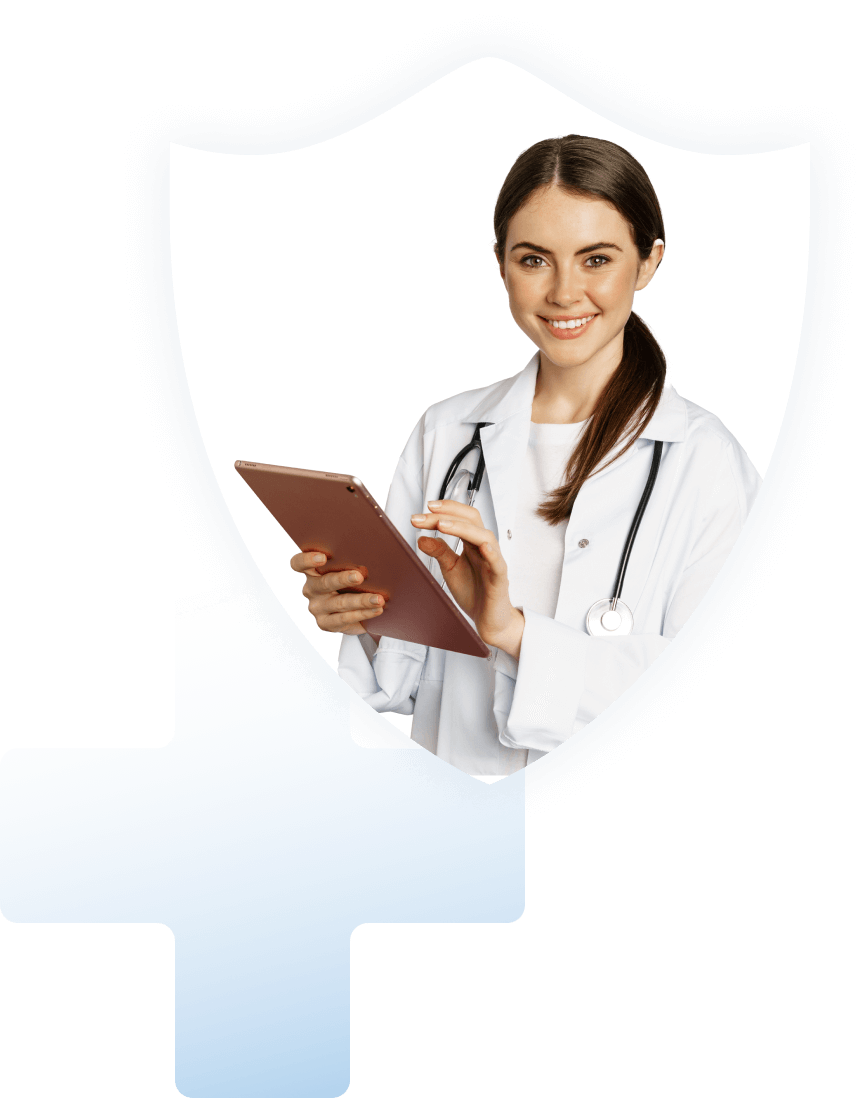Preferred Location: 212 5Th St Wenatchee,WA 98801 Wenatchee Change location
Preferred Location: 212 5Th St Wenatchee,WA 98801 Wenatchee Change location
SaferSTD Preferred Location: 212 5Th St Wenatchee,WA 98801 Wenatchee Change Location

Washington State is known, among other things, for its booming tech industry, it’s water- water-everywhere including miles of marine shoreline, incredible wilderness (including the tail end of the PCT trail) and a regular top-five ranking for being environmentally friendly and, of course, no state tax. For Pacific North westerners, living in here isn’t all hidden caves, craft beer, and marijuana laced coffee, it’s also kindhearted neighbors and caring colleagues who value their health. That’s why Washington locals are taking care of their sexual health by visiting STD clinics and getting regularly tested for sexually transmitted infections like chlamydia, gonorrhea and HIV. There are a full range of options from private STD testing facilities to free STD Testing Centers conveniently located and simple to access.

The Centers for Disease Control and Prevention1 (CDC) recommends screening for the most common STDs, including chlamydia, gonorrhea, hepatitis B, hepatitis C, syphilis, herpes 1, herpes 2, and HIV for both men and women. In addition, the CDC suggests women get screened for trichomoniasis.
SaferSTD recommends searching for locations that offer a 10-test panel which tests for the most common bacteria and viral STDs in the U.S. with additional premium add-ons like early HIV detection, if needed.
The CDC2 provides detailed STD testing information as to when you should get tested. In summary, you should get tested today if you are sexually active, never been tested before, have had unprotected sex in the past, or if you exhibit symptoms.
According to the World Health Organization3, the majority of STI cases reported every day, more than one million, are asymptomatic; another reason to get tested today.
You should get tested again in 90 days to rule out STDs that have specific exposure waiting times, including HIV.
STD testing can be a quick and simple process, depending on the type of test you choose and where you get tested. Some may require an oral or genital swab, a urine test or blood sample, or a physical exam to check your genital area for signs of an STD.
SaferSTD has identified preferred providers that require only a urine test, a blood sample, or both without a physical exam.
The speed at which you receive your STD testing results depends on where you get tested. Before you choose your location, find out how long testing results will take.
At-home STD testing results are usually 3-5 business days, depending on the manufacturer of your test. You also need to take into account the amount of time it takes to receive the test or pick one up, perform the test, and ship it back, before the lab can analyze your results and report back to you.
If you test at a public facility such as a neighborhood clinic, you may have to wait a week, if not more for the results, which could delay treatment. If you test through a private facility, they have the fastest turnaround within 1-3 business days.
SaferSTD has researched and identified the most accredited and most reputable testing locations. Click here to find a preferred location near you.
Some STD testing clinics offer same-day walk-in options without an appointment. Below are nearby preferred locations that offer this option.
The cost of STD testing depends on whether you select private, public, or at-home testing, as well as the type of test(s) you need.
Several at-home STD options and public testing locations can cost up to $250, with most on the higher end, depending on the brand and type of testing. Public testing fees also vary based on income and welfare eligibility.
With private testing, you may save money on a low-cost comprehensive 10-test panel that tests for the most common bacterial and viral STDs in the United States.
SaferSTD has researched and identified reputable locations that offer upfront pricing without hidden fees. Click here to find a preferred location near you.

Accredited and Certified
These location types are best for: Privacy and convenience
Description: Order online and receive a doctor's order to visit this lab to get tested in as little as 15 mins. Get your results privately within 1-2 business days and speak with a doctor over the phone if your test results come back positive. Doctors may prescribe treatment or refer you to a specialist if needed.
Accredited and Certified
These location types are best for: Privacy and convenience
Description: Getting an STD test at a clinic near you has never been easier. When you choose this location, you can get a doctor's requisition to get tested in as little as 15 minutes. Following your test, you receive your results privately within 2 business days, and can speak to a doctor over the phone with confidence, should results come back as positive.
Accredited and Certified
These location types are best for: Privacy and convenience
Description: Why go to a public clinic? Get convenient and fast STD testing that is 100% confidential. Individual tests under $50. Order online and visit this lab the same day for a quick 15 min test. Get your results online within 1-2 business days, and view them privately. Doctor consultation available over the phone, should results come back as positive.
Accredited and Certified
These location types are best for: Privacy and convenience
Description: Get Fast, Easy and Affordable testing at this location. Results come back within 2 business days and be in and out of the lab in less then 20 minutes.
Show only locations where privacy and discretion is taken into importance.
Description: Walk-in Clinic: Open Mon.- Sat., 7am-6:30pm
Description: Need to register as a patient.
Description: Hours subject to change. Please call 509.663.8711 for confirmation
Show only locations where you can easily book your test online.
Description: Social Service Organization.
Description: Public Health Department/Social Services Department. Need to make an appt for mpox vaccine
Description: Need to register as a patient.
Show only locations where they offer the HIV RNA Early Detection Test for people who think they may have been recently exposed to the HIV virus
Description: Closed for lunch from 12noon-1pm
Description: Social Service Organization. If you are uninsured, you may qualify for a state-funded program or a lower fee scale. Please bring the following documents: pay stub, photo ID, proof of residence. You will not be turned away because of your inability to pay.
Description: Need to register as a patient.
The CDC funds the state health department through a grant program that supports community wide STD safety that includes prevention, diagnosis, treatment, and follow-up. Across the state 75% of the notifiable diseases are STDs.
Health-care providers note chlamydia is the most frequently reported STD. The number of chlamydia infections in the region is unfortunately on the rise.
This indicates an alarming trend that shows Washington youth are not getting adequate education about the dangers and prevention of chlamydia.
After several years with a slow but steady decline in gonorrhea cases, there has been an increase between the periods of 2009 to 2016.
There is an ongoing concern that gonorrhea is becoming increasingly antibiotic resistant.
We also see a large disparity between male and female syphilis rates. Approximately 70% of syphilis cases were people living predominantly in urban Puget Sound. Women had a rate in 2015 of only 1 person per 100,000 where in men we’re seeing 12 cases per 100,000. 79% of the males infected report a history of men having sex with men. 28% had a co-infection of HIV.
The reported cases of herpes were 36 per 100,000. This rate has stayed fairly static since 1996.
The state department creates an HIV/AIDS epidemiology report which is published in collaboration with public health. The number of people with new diagnosis of HIV statewide has been on a slow decrease over the past 10 years. There used to be 553 cases per year between 2004 and 2008 and now we are at 7.6 cases per100,000. The number of cases for males and females are about the same with over 85% of males infected being gay or bisexual men.1 in 6 cases report a history of injection drug use. Since 2000 there have been 7cases of HIV transmission from mother to baby in the state.
Fortunately, the healthy youth act of 2015 discusses HIV and sexual health education in Washington State and is mandated for schools statewide. Hopefully this new wave of educated citizens will help the rates to rapidly descend.
Each school board is provided all instruction and materials used in teaching sexual health class to students which:
The goal of sex education, decided by the state, is safe and healthy understanding of sexuality. The curriculum acknowledges that people may choose to abstain from sexual activities at various points in their life and stresses that abstinence is the only certain way to avoid the spread of STDs and to avoid unwanted pregnancy.
It also provides accurate information about STDs including how they’re transmitted and the efficacy of all FDA approved methods of reducing the transmission rates of these diseases. Information is provided, at each school, on local resources for testing and medical care that includes promoting healthy self-esteem as well as the message that sexuality will be a lifelong process needs and circumstances change.
HIV testing is easily available in multiple locations with results available in 2-4 weeks. Herpes testing with same-day results is available as well with walk-in or appointment options.
Starting students with accurate and easily accessed information begins a solid foundation for ensuring sexual health in the community. Washington parents and educators want open dialog with their youth.
The estimated statewide population is just over 7 million people almost 1/4 of these are under 18 years of age with half being female. The population is 80% white, 4% African-American, 8% Asian, and 12% Hispanic. 90% of the population has graduated high school and a whopping 32% (which is higher the national average) has finished a bachelor’s degree or higher.
There is less than 8% of the population without adequate health insurance and the median household income is $61,000 combined with 12% of the population living in poverty. On the other end of the spectrum Washington is the 12th richest state in the US.
This disparity speaks to why certain low income areas have higher STD rates than others and prompts our government officials to prioritize outreach programs to the at-risk populations.
It’s clear that despite challenges presented by President Trump’s changes to Planned Parenthood funding and Obama-care, pacific northwest dwellers continue to lead the nation in their sexual education and fight against STDs.
Current local testing options include:
Sexual health means all citizens are equally entitled to have education, testing, diagnosis and treatment despite their financial and racial background. Check with the Washington State Department of Health or CDC websites to find and access facilities in your neighborhood.
http://www.doh.wa.gov/Portals/1/Documents/Pubs/150007WAHIVEpidemic.pdf






